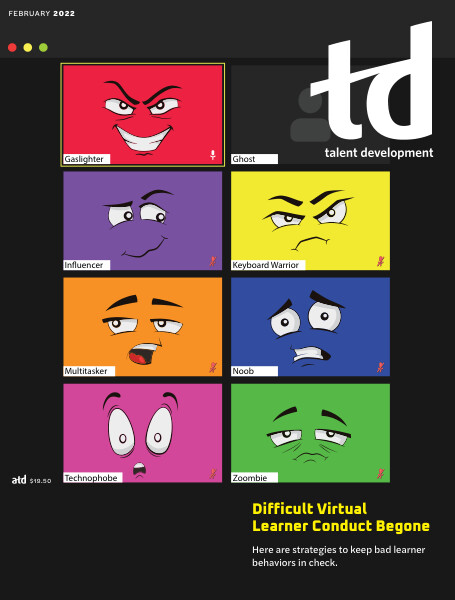TD Magazine Article
Learn Outside the Box
Promote a culture of learning by embracing different ways to learn.
Mon Jan 31 2022

There's a difference between establishing learning requirements and building a culture where individuals can and want to learn. Laura Baldwin and Adam Witwer with learning company O'Reilly highlight some of the key differences in Hands-on Learning Is Crucial to Building and Sustaining Technical Skills.
Organizations that have employees satisfy a mandate of required learning, which may include watching a specific amount of videos, reading a book, or earning a certificate, are rooted in linear learning requirements. Linear learning, which is sequential and continuous, is how most people develop new skills. However, the authors note that is not always the most effective method to equip workers with the skills they need to solve problems on the job in real time.
Nonlinear learning—that is, learning by doing—is when individuals, who often already have some experience with the subject matter, seek out and find solutions to a problem in the flow of work. For example, an employee could scan a resource manual for a solution to an issue and then immediately apply that method.
According to Degreed's 2021 How the Workforce Learns report, employers that promote learning have higher rates of individuals participating in experiential, interactive, and instructional activities.
The ability to locate and apply knowledge instantly and at the time of need is what Baldwin and Witwer call "hands-on learning at its best." Nonlinear or experiential learning helps workers acquire and sharpen their skills. Technological advancements have created ways that make it easier for employees to access knowledge to apply in real time.
Degreed's report reveals that individuals in companies that promote learning read online newsletters, search the internet, and watch videos weekly to learn. They also listen to podcasts and use learning mobile apps monthly. More than half reported that their managers likewise recommended learning resources or development opportunities to them.
Baldwin and Witwer point out that linear learning has its place and is especially useful for engaging learners with content with which they have no familiarity. Understanding how workers learn can help talent development professionals provide a variety of learning and training opportunities and reinforce a positive culture of learning.

